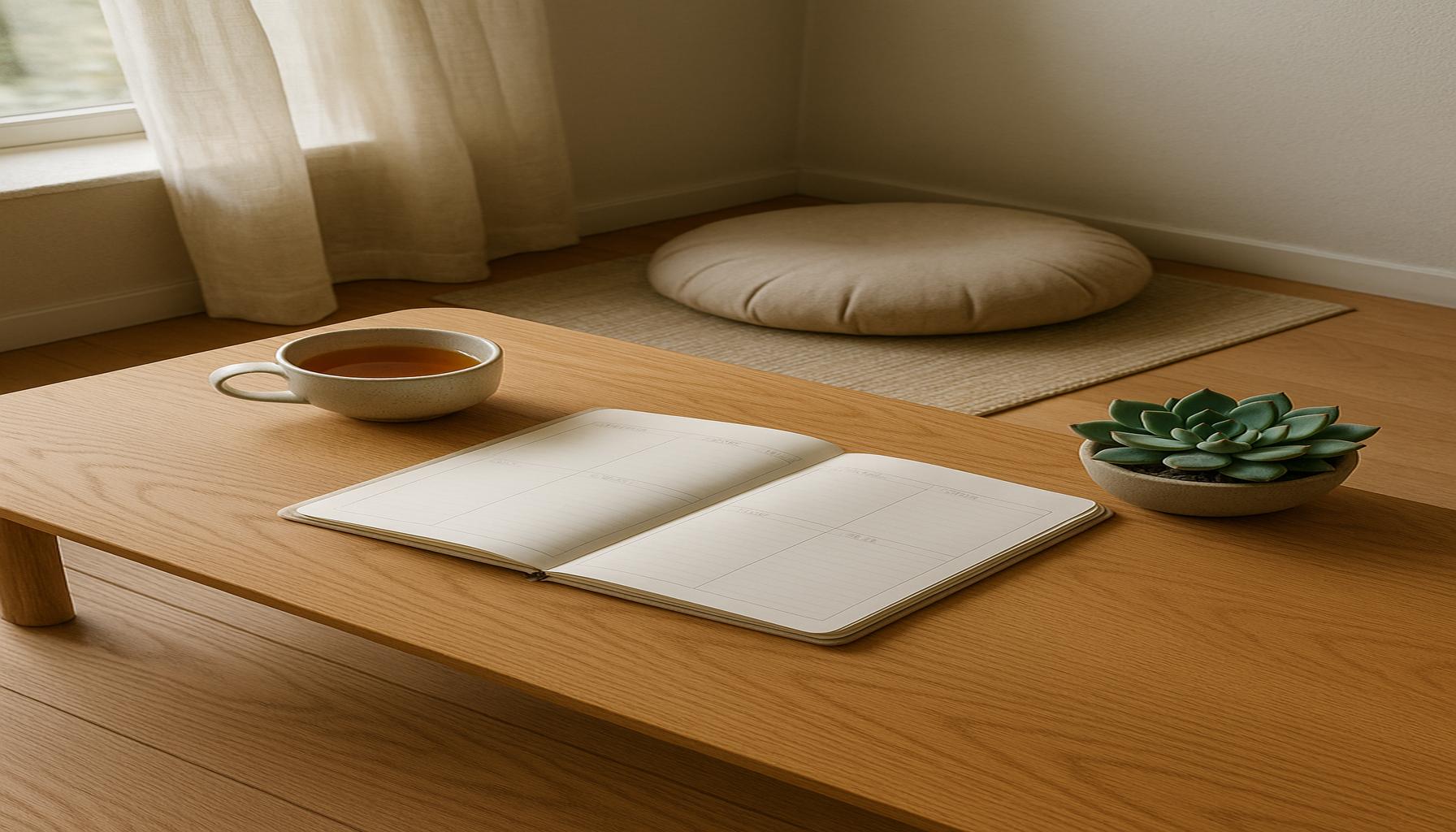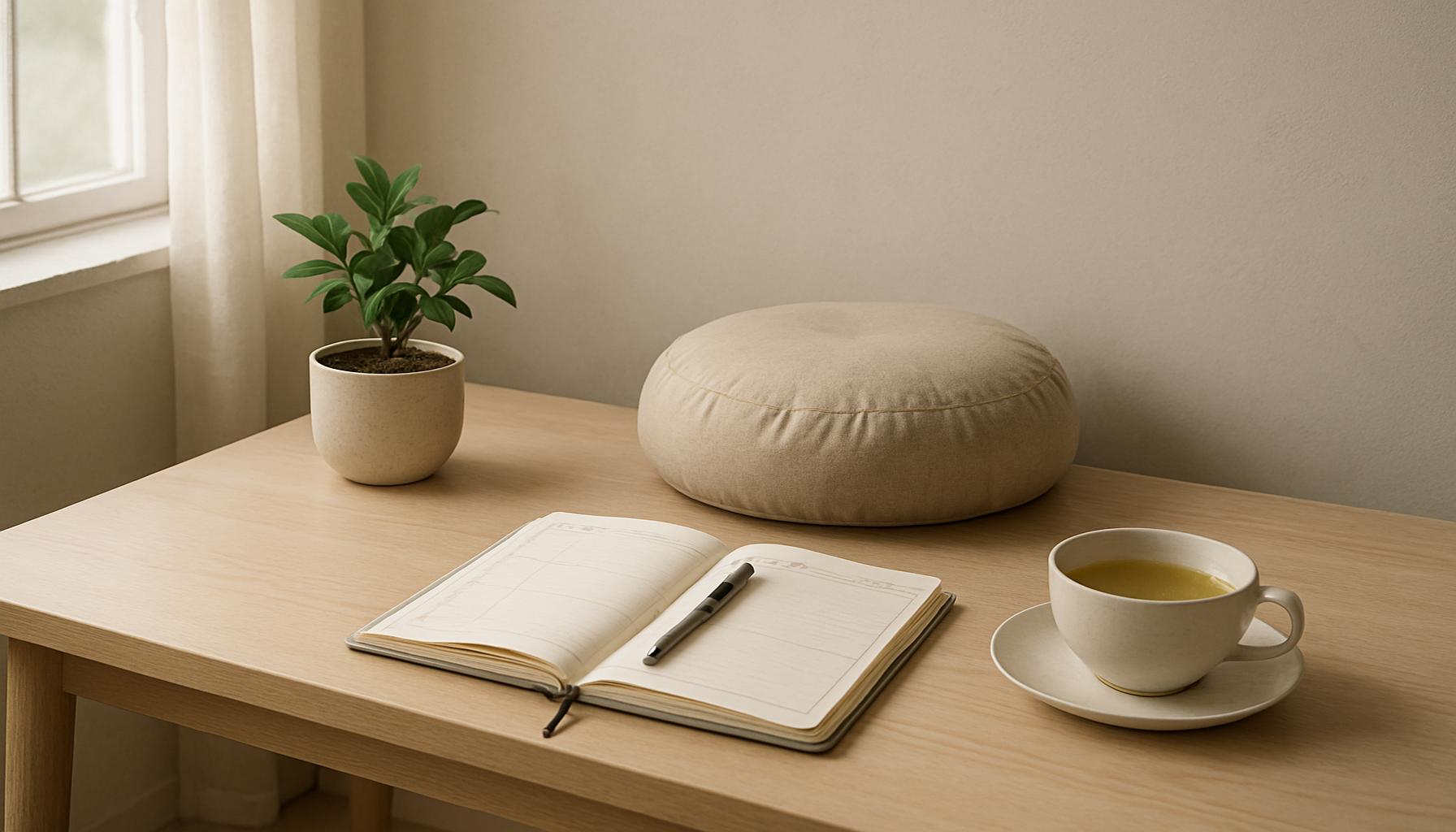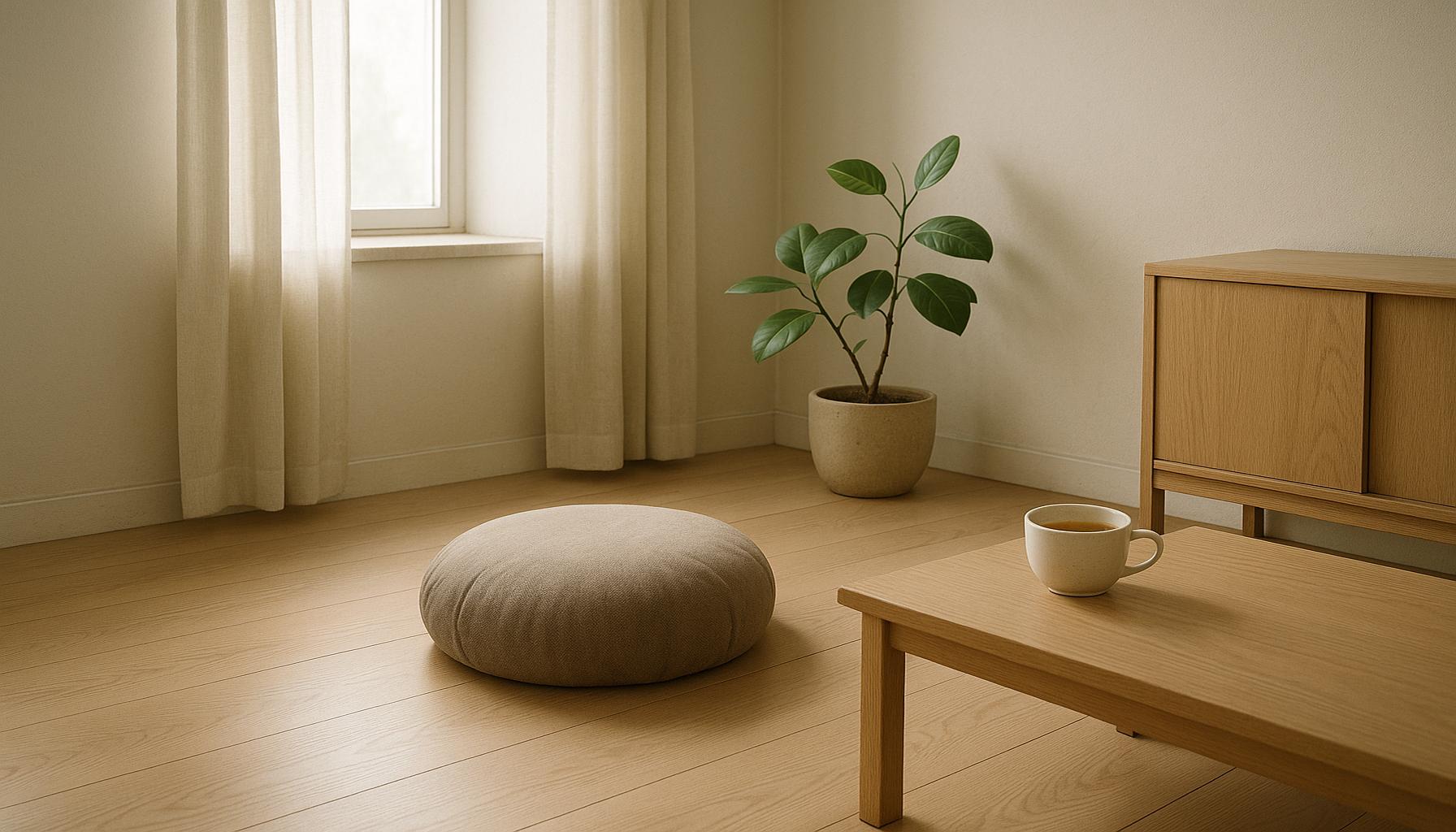Integrating Mindfulness into Personal Organization: Techniques for Living in the Present While Getting Organized

Introduction to Mindfulness in Organization
In our increasingly chaotic lives, the need for effective organization has become more critical than ever. Juggling work commitments, family responsibilities, and social engagements can create a constant sense of urgency, leaving us feeling overwhelmed and unfocused. However, by embracing the principles of mindfulness, individuals can cultivate a more balanced, organized lifestyle. This practice encourages us to be present in the moment, not only enhancing our productivity but also bolstering our mental health and emotional resilience.
Essential Techniques for Mindful Organization
Integrating mindfulness into your organizational techniques can be transformative. Below, we explore several fundamental practices that help bring clarity and ease to the often-overbearing task of staying organized.
- Awareness: Building awareness is the first step in cultivating an organized mindset. Start by taking a few minutes each day to assess your tasks and priorities. Use tools such as lists or digital apps to visualize what needs to be accomplished. This clarity can guide you in making informed decisions about what to tackle first. For example, in a professional setting, a prioritized to-do list can illuminate which projects require immediate attention and which can be scheduled for later, thereby preventing the anxiety that comes from feeling unprepared.
- Simplification: In a world filled with distractions and excess, the art of simplification becomes crucial. Identify the tasks and commitments that genuinely matter to you. Fascinating research from studies in behavioral psychology indicates that reducing clutter—both physical and mental—can lead to improved focus and productivity. Consider decluttering your workspace or eliminating unnecessary digital notifications that could divert your attention and energy.
- Mindful Breaks: It’s essential to incorporate mindful breaks throughout your day. These pauses can take the form of brief meditation sessions, gentle stretching, or simply stepping outside for fresh air. Research has shown that taking regular breaks can not only restore energy but can also enhance creativity and problem-solving capabilities. A quick five-minute walk, for instance, can rejuvenate your mind, allowing you to return to your tasks with renewed vigor and focus.
- Gratitude Journaling: Practicing gratitude can have profound effects on your overall outlook and organization. By keeping a journal where you regularly note progress and achievements, you foster a positive mindset that motivates you to stay organized. For instance, acknowledging even small victories—like completing a daunting project or successfully managing a busy day—can boost your confidence and reinforce your commitment to staying organized.
Conclusion
By implementing these mindful practices, you can significantly transform your organizational habits while remaining fully engaged in the present moment. This approach not only enhances your productivity but also helps you develop a deeper connection with both your tasks and personal motivations. The journey to a more organized life through mindfulness is not just about achieving goals; it’s about cultivating a sense of purpose and balance within your daily routine.
If you are eager to learn how to weave mindfulness into your daily organization efforts and live more intentionally, continue reading. This exploration will provide further insights into making mindfulness the cornerstone of your organizational strategy.
DISCOVER MORE: Click here to learn how mindfulness can transform your minimalist lifestyle

Mindfulness as a Foundation for Effective Organization
Understanding how mindfulness intertwines with effective personal organization can cultivate not only a structured environment but also a deeper connection to your purpose. When we approach our tasks with mindfulness, we shift our focus from merely completing a checklist to engaging fully with the work at hand. This shift enhances both our efficiency and satisfaction. Here, we delve into a few transformative techniques that empower us to embrace the present while organizing our lives effectively.
Active Listening in Task Management
Active listening is a mindfulness technique that can significantly enhance how we manage our tasks. When planning out your day or engaging in meetings, listen fully to what is being said rather than simply waiting for your turn to speak. This practice allows you to gather vital information that can inform your organizational strategies. By being present and attentive, you can pick up on nuances that might influence your prioritization of tasks or inform decisions about future projects.
Emotional Awareness in Decision Making
Every to-do list or agenda has an emotional undertone. Recognizing how you feel about certain tasks can help you make better choices about what to prioritize. Keeping a brief record of your feelings about tasks can aid in developing a deeper level of self-awareness. Are there responsibilities that evoke anxiety, boredom, or joy? Understanding your emotional responses allows you to address potentially overwhelming areas. You might find it beneficial to replace tasks that induce negativity with those that inspire you, thus bringing more joy into your organizational process.
Mindful Time Management
Time is an invaluable resource in personal organization, and approaching it mindfully can yield numerous benefits. Creating a structured yet flexible schedule is key. Here are some strategies to incorporate mindfulness into your time management:
- Time Blocking: Allocate specific blocks of time for different tasks, ensuring that you focus solely on one task at a time. This technique reduces the tendency to multitask, which can lead to decreased productivity.
- Set Intention: Begin each day by setting a clear intention for what you want to accomplish. This practice grounds you in your priorities and keeps you aligned with your organizational goals.
- Establish Boundaries: Create boundaries for your work hours, ensuring that personal time remains sacred. This focus on balance fosters a healthier approach to productivity.
Incorporating mindful time management can lead to a significant reduction in stress and an increase in satisfaction with your organizational system. By staying intentional and fostering a present-centric mindset, you make space for creativity and innovation in your tasks. Mindfulness in personal organization, therefore, is not just about maintaining a structured environment—it is about nurturing a state of well-being that advocates for both productivity and self-compassion.
| Mindfulness Techniques | Organizational Benefits |
|---|---|
| Meditation Practice | Fosters clarity and reduces anxiety in planning. |
| Mindful Journaling | Enhances focus on daily goals and priorities. |
| Breathing Exercises | Improves focus, leading to better decision-making. |
| Mindful De-Cluttering | Creates a calming environment, aiding concentration. |
When it comes to integrating mindfulness into personal organization, several effective techniques arise, each promoting a deeper connection to the present moment while enhancing productivity. For instance, engaging in meditation practice not only calms the mind but also tends to reduce the overwhelming feeling that often accompanies planning and structure, leading to much clearer thoughts. Another exceptional method is mindful journaling. This technique encourages individuals to reflect on their daily goals, helping to establish a focused mindset that can better navigate tasks and responsibilities. By creating time for breathing exercises, individuals can significantly augment their decision-making skills through a more centered approach, reducing rash choices often made out of stress.Lastly, implementing mindful de-cluttering practices can transform any environment into a peaceful oasis, minimizing distractions and significantly aiding overall concentration. The integration of these mindfulness techniques not only fosters an organized life but also enhances the overall quality of one’s living experience, making organization a pleasurable journey rather than a chore.
DISCOVER MORE: Click here to learn about the significance of clarity in minimalist design
Enhancing Personal Organization Through Mindful Practices
Mindfulness is not just a philosophical concept; it is a practical tool for enhancing our organizational tactics. By employing mindfulness techniques, we can create an environment that not only promotes efficiency but also encourages mental clarity and emotional balance. Below, we explore several additional strategies that can elevate your personal organization through mindfulness.
Visualization Techniques for Clarity
Visualization is a powerful practice that can optimize personal organization. Before diving into tasks, take a moment to visualize the desired outcome. Imagine yourself successfully completing projects, decluttering spaces, or even just enjoying a peaceful workspace. This technique not only boosts motivation but also provides a clear mental framework for the steps needed to reach your goals. Research shows that visualization can enhance performance, making it a practical addition to your organizational toolbox.
Mindful Decluttering
The physical space in which we operate significantly affects our mental state. Mindful decluttering encourages us to be intentional about what we surround ourselves with. Instead of tossing items out hastily, approach the process with mindfulness by asking yourself, “Does this item serve a purpose in my life?” This inquiry can aid in determining what to keep and what to discard, fostering a more harmonious environment and reducing distractions. Consider a strategy known as the “one-in, one-out” rule, where you commit to eliminating one item every time you bring a new one into your space. This conscious approach reinforces both organization and presence.
Reflective Journaling for Continuous Improvement
Engaging in reflective journaling can deeply enhance personal organization while fostering mindfulness. Dedicate time at the end of each day or week to write about your organizational practices. Reflect on what worked, what didn’t, and how you can improve moving forward. By documenting these insights, you are training your mind to remain aware of your organizational habits, patterns, and emotional undercurrents. Over time, this practice can lead to transformative changes. According to the Journal of Happiness Studies, people who engage in reflective journaling report higher levels of emotional regulation, suggesting that these mindful reflections can lead to greater satisfaction in both personal and professional realms.
Breathing Exercises to Ground Yourself
Before starting a organizing session, try incorporating simple breathing exercises. These can serve as a moment to reset your mind and body, preparing you for focused productivity. Techniques such as the ‘4-7-8’ breathing method—inhale for 4 seconds, hold for 7, and exhale for 8—can be hugely beneficial. Such practices not only reduce stress but also enhance clarity, allowing you to approach tasks with a calm and collected mindset. This heightened state of awareness can improve your decision-making skills, further personalizing your organization tactics.
Integrating Mindfulness into Technology Use
Our digital environments heavily influence our organizational habits. Take time to assess how you’re utilizing digital tools. Mindfulness can be integrated here by setting specific times to check emails, social media, and other notifications, rather than allowing them to disrupt your workflow. Incorporate apps that promote mindfulness practices, like meditation timers or focused task lists. These tools not only spark engagement but help enforce the idea that being organized in the digital space can lead to significant improvements in your overall effectiveness.
Integrating mindfulness into personal organization ultimately creates a blend of discipline and awareness. Whether through physical decluttering, self-reflective practices, or mindful technology use, each of these strategies serves to heighten your awareness of both your organizational habits and your emotional responses. Embracing these techniques can lead you to a richer, clearer, and more organized life—one where you thrive in the present moment.
DISCOVER MORE: Click here to learn about the importance of clarity in minimalist design
Conclusion: Embracing Mindfulness for a Balanced Life
In today’s fast-paced world, the intersection of mindfulness and personal organization offers a refreshing approach to managing our daily lives. By embracing mindfulness techniques such as visualization, mindful decluttering, reflective journaling, and conscious breathing, we not only enhance our organizational skills but also cultivate a deeper sense of presence in our everyday lives. Each technique serves to bring greater awareness to our actions, encouraging us to be more intentional and focused.
As we integrate these practices into our routines, we begin to dismantle the chaos that often accompanies disorganization. Mindful decluttering can transform our physical spaces into sanctuaries of productivity, while reflective journaling fosters a continuous cycle of self-improvement. Moreover, establishing mindful technology use ensures that our digital environments support, rather than hinder, our organizational efforts.
Ultimately, adopting mindfulness in our organizational practices is more than just a method; it’s a lifestyle shift that promotes emotional regulation and well-being. As you embark on this journey of self-discovery and improved organization, remember that the goal is not perfection but the opportunity to thrive in the present moment. By prioritizing mindfulness, you can create a life that balances the demands of organization with the tranquility of awareness, paving the way for a more fulfilling existence.


